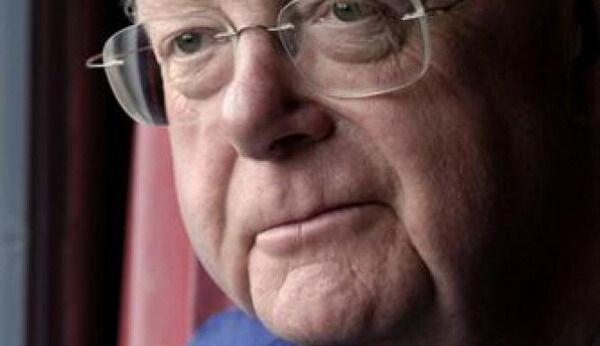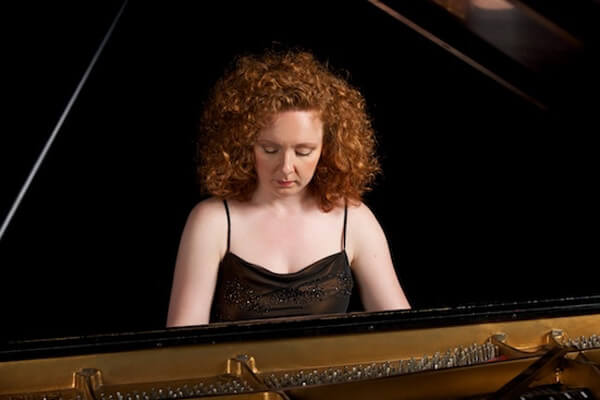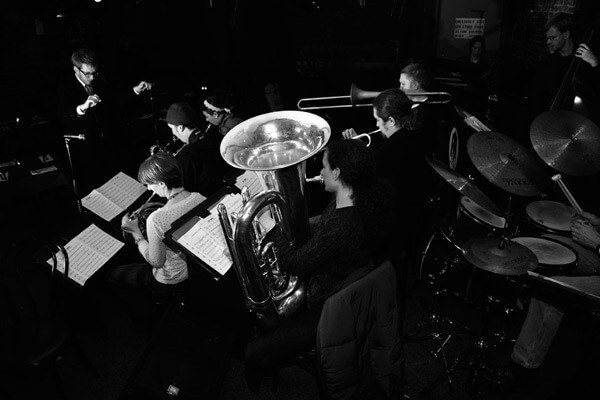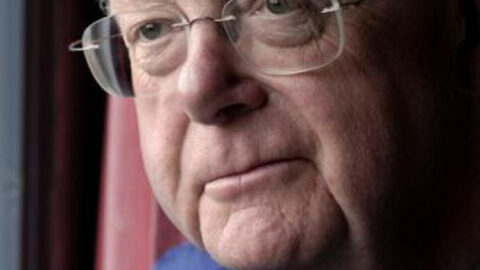This here was a tale of two halves, one part of the program devoted to Andriessen’s myriad piano miniatures, the other a trawl through a clutch of (mostly) decades-old big band scores. Rare is it when the spotlight is placed on one of these strands of this Dutch master’s creative practice, rarer still two in a single evening. Far from making for a lopsided recital, though, for the composer’s most hardened admirers this event at Atlas Performing Arts Center on April 9, 2014, will have proved among the most satisfying installments of the Washington-area “Andriessen 75” festival.

Compiled in 2009, Image de Moreau brings together a good 45 years of piano writing, running the gamut from didactic pieces, short birthday presents, and dry runs for more ambitious opuses. Scraps from the workbench, perhaps, but such scraps! The collection was an inspired inclusion, providing the festival’s only coverage of Andriessen’s early Ivesian “collage” and serial periods. (The post-pointillist Ètude pour les timbres was the composer’s graduation piece.) There’s also a comparison to be made with Kurtág’s Játékok: although assembled after the fact, Image is like a peek into Andriessen’s sketchpads, overhearing him working through rough drafts and untested ideas. For example, the title composition, a spinoff of Prokofiev’s Op. 11, was adapted verbatim as the “Overture” to Passeggiata in tram; the right hand-only Caecelia’s Counterpoint served the same function for the delicate tracery of 2006’s …miserere…; and Trepidus yielded generative material for De Snelheid.

Interpretive duties were split evenly between Great Noise Ensemble pianists Francesca Hurst and Molly Orlando, who brought complementary insights to the music. If Hurst’s stiff Base was hardly a patch on Andrea Rebaudengo’s cheeky account the previous evening, her Feli-citazione (a mellifluous, “Italianate” Berio tribute) was never less than exquisitely fluent. And it was a sight to see her donning mittens for the graphic Blokken, a notated approximation of one of Keith Jarrett’s Charles Lloyd-era freak-outs. As for Orlando, her account of the extremely difficult Trepidus was sorely lacking in the Necessary Relentless Precision department. Yet the left handed Trois Pieces couldn’t have been better judged; full marks for not making heavy weather of these jokey little soufflés.
Even more treasurable were the contributions of the Brad Linde Ensemble, Third Stream experts. Andriessen’s affinity for American jazz has deep childhood roots, and you needn’t know his Charlie Parker homage Facing Death to recognize bop’s decisive influence on his angular linear writing. Similarly, the raucous, wind-heavy timbres favored by the Hague School can be traced back directly to the great big band arrangers of the thirties, forties, and fifties. Nor is the precedent set by Stravinsky’s acidic forays into “classical” jazz (the Ebony Concerto, Tango, and Praeludium) to be underestimated. Though the jazz influence runs through the entire Andriessen portfolio, it comes out most strongly in the Orkest de Volharding band scores.

Dat gebeurt in Vietnam, On Jimmy Yancey, and The Family Revisited all date from the early seventies, a period when Andriessen had been making a close study of the politicized, post-Dixieland Weill-Eisler-Schulhoff aesthetic. The extracts from The Family, an “engaged” film released just as the idealism of les événements de 68 began to fizzle out, summoned up a particularly heady brew: game show theme songs, French light music, and Motown and Stax’s guttural saxes. Best of all was the most recent work, Monument to Graettinger, a encomium for the troubled, eccentric Stan Kenton arranger Robert Graettinger. Graettinger’s noir-ish charts were among the first to introduce “advanced” European sonorities into a large ensemble context, and Andriessen’s rapport with his granitic, hair-raising style was everywhere apparent in this 2011 offering. The Brad Linde Ensemble, one of the nation’s few repertory groups devoted to the progressive big band canon, was wholly in synch with the Dutchman’s strange sound-world. These were performances of great dash and brio, highlighted by the solo contributions of multi-reedist Brent Birckhead. Bravo!
All-Andriessen program
Image de Moreau: Base (1994), Feli-citazione (2000), Ètude pour les timbres (1962), Ricercare (1966), Blokken (1966), Image de Moreau (1999), Trois Pieces (1961), Caecelia’s Counterpoint (2006), Trepidus (1983)
Dat gebeurt in Vietnam (1972)
On Jimmy Yancey (1973)
The Family Revisited (1973, arr. 2011)
Monument to Graettinger (2011)
Francesca Hurst, Molly Orlando (pianos)
Brad Linde Ensemble
[Ed. Matt Mendez is covering the Andreissen 75 festival, a week-long celebration of Dutch composer Louis Andriessen’s 75th birthday, presented by The Atlas Performing Arts Center, Great Noise Ensemble, National Gallery of Art, Strathmore, and Shenandoah Conservatory, April 6-13, 2014.]
























